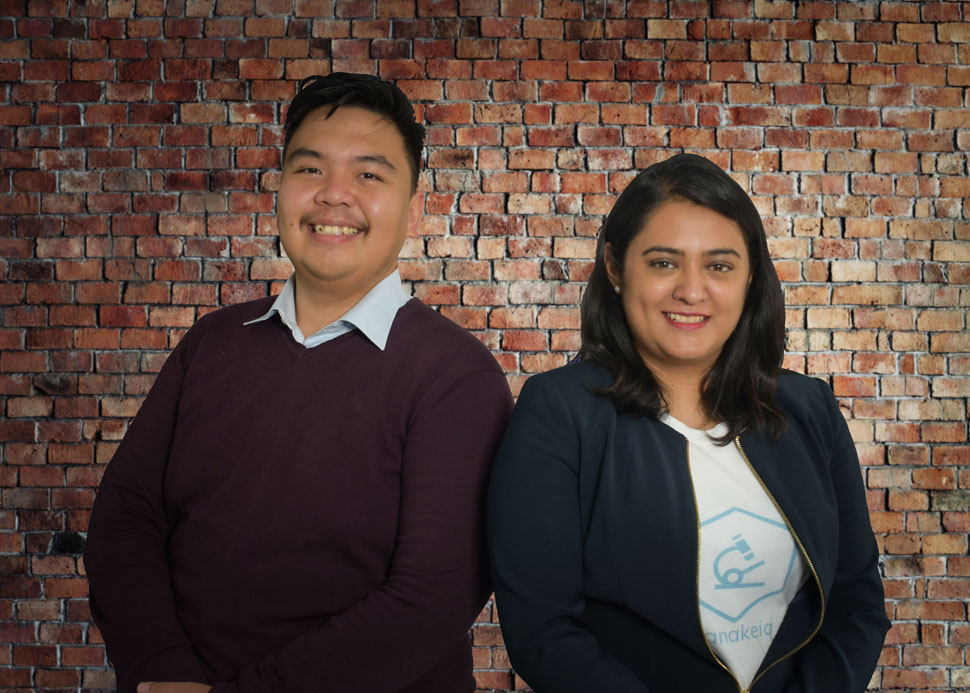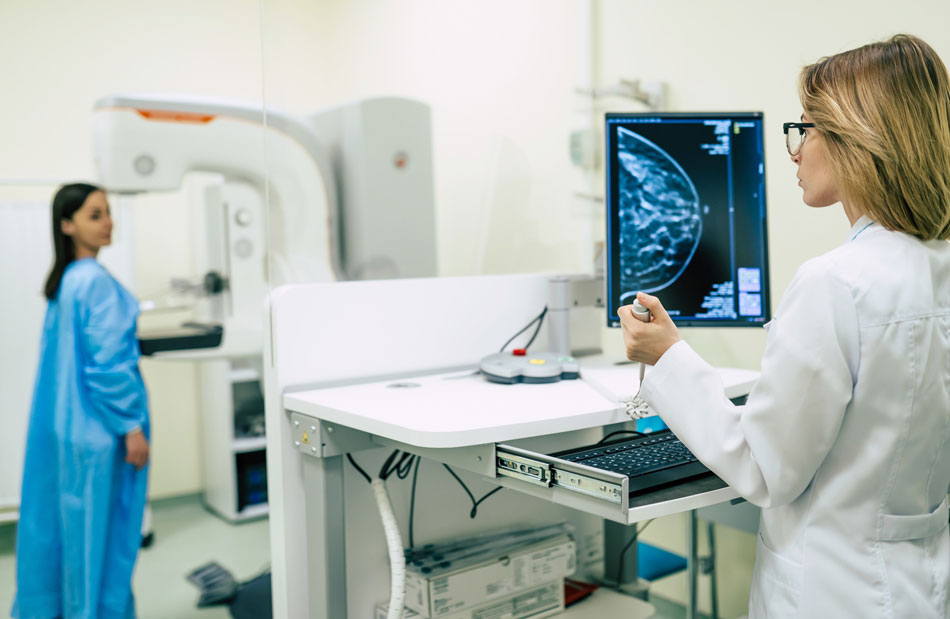Better than a human: The AI startup able to spot breast cancer

Artificial intelligence can diagnose breast cancer faster and more accurately than the human eye. The leading engine is made by Panakeia.
In this interview Business Age talks to Pahini Pandya, a former cancer scientist at the University of Cambridge, who built Panakeia's engine from scratch with her co-founder and AI researcher Pandu Raharja-Liu.
The pair realised that tiny differences in the appearance of cancer cells, which can only be detected by a computer, can reveal important information about their molecular state and the likely best treatment options.
Pahini, why did you and Pandu found Panakeia?
Panakeia’s aim is to make precision diagnostics accessible to patients all over the world. The company’s vision is driven by my first-hand experience of waiting for the results of lab tests for blood cancer - the same disease that I lost my childhood best friend to. Fortunately, my results turned out to be negative. However, reflecting on my own personal experience of that long, nerve-wracking wait for lab results, I started to wonder whether it was possible to translate my own research into the link between molecular state and cancer cell shapes in a meaningful way to help patients and doctors.
My co-founder, Pandu Raharja-Liu, also lost several members of his family to cancer and we shared a common frustration with the delays and challenges in cancer treatment decisions and care. Pandu had been working on developing ground-breaking AI methods to understand the response to treatment based on cancer cell shapes. We soon realised we shared a complementary understanding of the cancer diagnostics space, and Panakeia was born.

How accurate is your AI at reading breast cancer scans compared to human experts?
Breast cancer cells have specific characteristics and it’s relatively simple for the trained eye of a pathologist to examine a breast tumour sample down a microscope and identify which cells are malignant and which are healthy. Beyond identifying the presence of cancerous cells, the next question is what do we need to do about it? This question is more challenging as a straightforward visual check does not provide any information about the underlying properties of the cancer cells and the best approach for treatment. Normally, this kind of information would come from further laboratory testing including immunohistochemistry (IHC) lab tests, which costs several hundred pounds and can take several days or weeks to return an answer. This adds an unacceptable and stressful delay to the patient when dealing with a fast-growing cancer.
This is where Panakeia fits in. Our AI platform analyses digital images of routinely-collected tumour samples – the same ones the pathologist has looked at to identify the presence of cancer – and is able to extract information (that is not visible to the human eye) about the underlying molecular properties of the cancer and the best treatment approach in less than 15 minutes. Human experts including pathologists and doctors will always have a place in cancer diagnosis and treatment, and AI image analysis has the potential to equip these human experts with something akin to a visual superpower, allowing them to ‘see’ the underlying molecular state of those cells and transforming the way that routine samples are used to inform clinical decision-making.
In the case of PANProfiler breast, our first product, we can predict with a high degree of accuracy whether breast cancer cells contain ER or PR receptors, marking the patient out as a candidate for hormone therapy, or are positive for HER2 and would benefit from the drug Herceptin. This has the potential to improve outcomes for patients by enabling them to start life-saving treatments earlier – critical when dealing with fast-growing tumours.
What is the real payoff? Accuracy? Speed? Cost?
Slow-moving lab testing adds an unacceptable and stressful delay for cancer patients – every month delayed in starting treatment raises the risk of death by around 10 percent. The PANProfiler Breast is immensely faster than existing tests, providing a diagnostic read out from the original H&E image in a few minutes, as opposed to a few days or even weeks. With this information, doctors can make informed treatment decisions and patients can begin their treatments sooner. Further, this also provides efficiency gains for overstretched pathology workflows. Currently PANProfiler Breast is much cheaper, and at least as accurate, if not more, than standard IHC (immunohistochemistry) lab tests, potentially saving the healthcare systems millions every year in materials and maintenance costs.
How was the technology built?
We built our AI platform in-house and from scratch. We knew from research studies that molecular alterations in cancers can cause changes in cell structure and tissue environment, suggesting that it should be possible to predict the underlying characteristics and biomarker status of cancers – and therefore the most suitable treatment – from their physical appearance in routine pathology images. The issue was that these visual differences are too subtle to be detected by eye.
At the same time, advances were being made in image analysis using AI technologies such as convoluted neural networks. Using these technologies, we were able to build an AI platform that can visually analyse routine pathology images to reveal information about the underlying molecular state of the cancer cells.

How hard is it to apply the AI to other cancers?
In recent years, numerous studies have shown that molecular alterations in a broad range of cancer types including lung, colorectal, breast and gastric cancer, can cause changes in cell structure and the tissue microenvironment. Our first product is for breast cancer diagnosis and treatment, but we are already working on expanding the PANProfiler platform to other major cancers including bowel and lung.
Tell us about the company
Panakeia was founded in 2018 when I met Pandu at Entrepreneur First. We’re now 15 people strong, and we have a whole range of experience and expertise across cancer research, pathology, machine learning, bioinformatics, product development and commercialisation. For us, it’s not just about diversity, we are strong believers in inclusivity and actively seek people with different backgrounds, views and opinions. We welcome this broad spectrum of professional and personal experience and value the insights and creativity that this diversity brings to Panakeia. As a team, we work together with integrity, doing the right thing even when no one is looking. We have each other's backs – we're accountable to ourselves and each other, and ultimately our stakeholders. This approach enables us to deliver true value to our stakeholders, starting with the patient.
Our board is chaired by Dr Richard Foster, who is a founding partner of McKinsey’s Healthcare and Technology and sits on the board of Memorial Sloan Kettering Cancer Center in New York. Also on the board is Julia Hawkins, General Partner at investment firm LocalGlobe, with Hoxton Ventures’ Hussein Kanji as an observer.
What's been the hardest thing about building a healthcare AI startup?
As a startup, we face different challenges every day, but one consistent area of focus for us has been building the right team and getting the culture right. Without the right people, we won’t have the ideas and ability to bring those ideas to fruition. Culture is a key part of this and we’ve worked hard to create a supportive, inclusive culture, from our employees through to our partners and board members. It’s one thing to define the right culture, it’s another thing to keep it going and evolving and this has been a particular challenge during the Covid-19 pandemic. We’ve had to work creatively to ensure we continue to refine and adhere to our company values, and that the team – and therefore our business – have been able to thrive during this difficult time.
Developing and attempting to validate healthcare products during the pandemic has also been tricky given the necessary focus of the NHS and healthcare systems around the world has been on fighting Covid-19. However, there is now an opportunity for the NHS to embrace technology as part of the recovery. Specifically, for Panakeia, there is a large cancer diagnosis backlog which the Institute for Public Policy Research (IPPR) estimates could take until 2033 to clear. Technologies like ours can help speed up this recovery and enable hospitals to diagnose and treat patients when needed, by speeding up diagnosis and treatment decisions, and reducing the burden on busy and costly laboratory services.
Advocates for the NHS argue that outsourcing analysis to the private sector is a form of “privatisation”. How do you view this?
The NHS is one of a kind and we should put our best foot forward to support it and enable it to achieve the best outcomes for patients – sometimes this involves some level of ‘privatisation’. Our duty as a healthcare company – and the duty of the NHS – is to provide patients with the best care possible. In certain situations, this might mean that analysis is outsourced to a private sector to enable to the NHS to continue to treat everyone who needs treatment, when they need it. Ultimately, it comes down to striking the right balance, protecting the NHS and ensuring patients receive the best care available without unnecessary delays.
What is the long-term vision for Panakeia?
Panakeia’s vision is to make precision medicine accessible for patients all over the world. We do this by building technologies that bring down traditional barriers to diagnosis: time, socioeconomic and geographic. The next 12 months will focus on bringing our first product for breast cancer diagnosis and treatment forward to help as many patients as possible.
Main image by: Photo by Victoria Strukovskaya on Unsplash
.jpg)
.jpg)
.jpg)